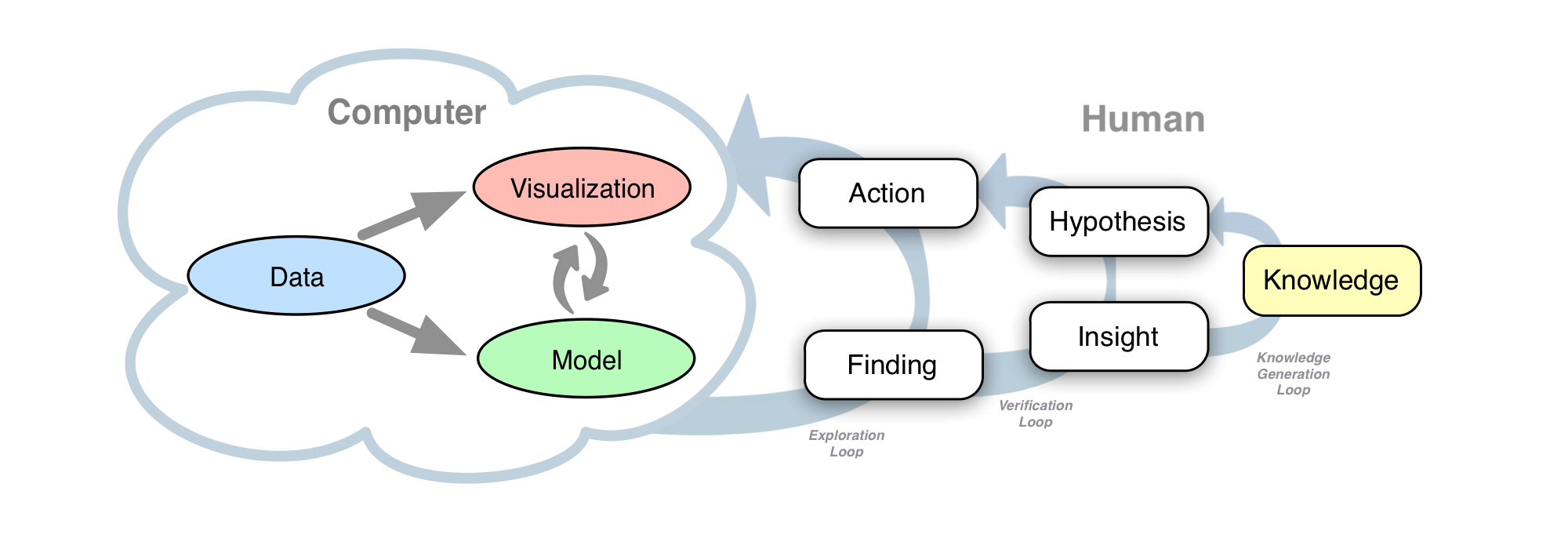 Knowledge Generation Model for Visual Analytics. The model describes interaction between human and computer to generate knowledge from data.
Knowledge Generation Model for Visual Analytics. The model describes interaction between human and computer to generate knowledge from data.
Abstract
Visual analytics enables us to analyze huge information spaces in order to support complex decision making and data exploration. Humans play a central role in generating knowledge from the snippets of evidence emerging from visual data analysis. Although prior research provides frameworks that generalize this process, their scope is often narrowly focused so they do not encompass different perspectives at different levels. This paper proposes a knowledge generation model for visual analytics that ties together these diverse frameworks, yet retains previously developed models (e.g., KDD process) to describe individual segments of the overall visual analytic processes. To test its utility, a real world visual analytics system is compared against the model, demonstrating that the knowledge generation process model provides a useful guideline when developing and evaluating such systems. The model is used to effectively compare different data analysis systems. Furthermore, the model provides a common language and description of visual analytic processes, which can be used for communication between researchers. At the end, our model reflects areas of research that future researchers can embark on.